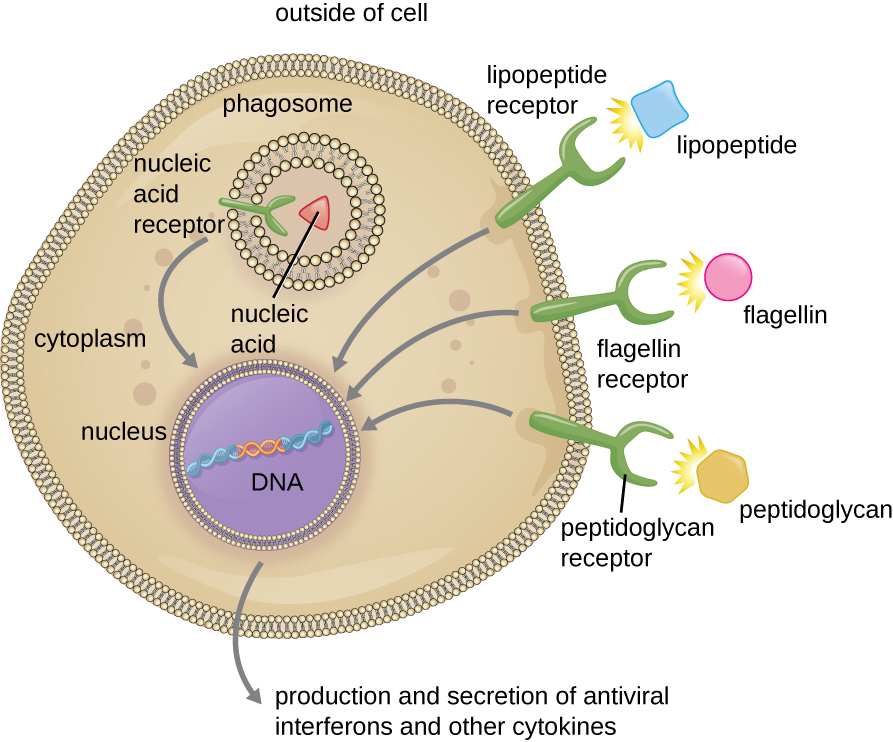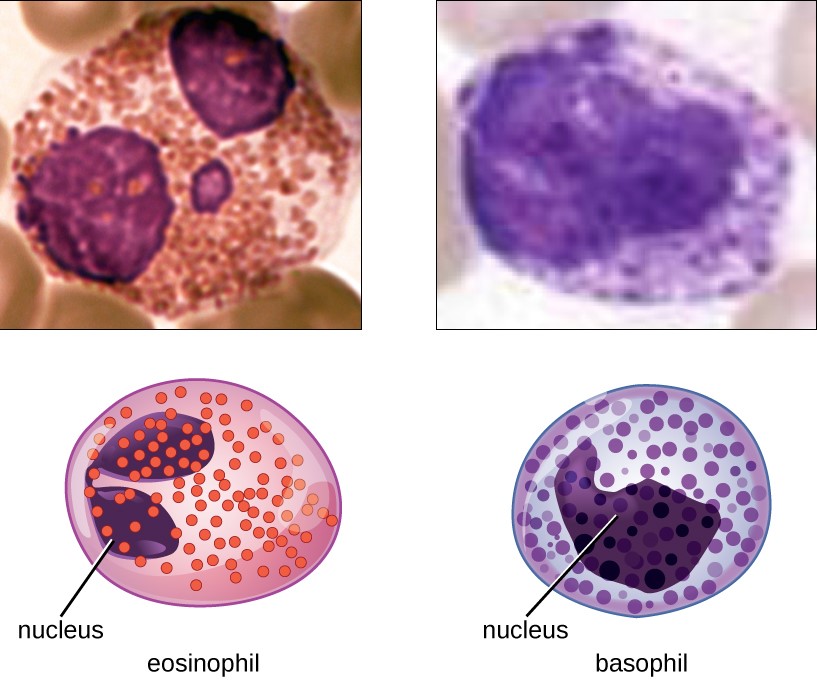Playlist
Show Playlist
Hide Playlist
Innate Immunity: Complement
-
Slides Innate Immunity.pdf
-
Reference List Pathology.pdf
-
Download Lecture Overview
00:01 So we've talked about two cellular components of innate immunity, the mast cells and the NK cells. 00:07 Now we're going to talk about a protein component of the innate immune response. 00:12 And that's the complement. 00:14 And complement a series of proteins, there are over 20 of them, they are synthesized, by the liver, released by the liver and they circulate. 00:22 It turns out that in tissues as well, macrophages are going to be a major source of compliment in that location. 00:31 In any event, these proteins of the complement cascade are activated by sequential proteolysis, they get clipped by things that are upstream, so they are get turned on and become proteases themselves, by virtue of degradation of breakdown of the protein by specific clipping. 00:51 There are three ways that we can start the complement cascade. 00:55 One, in the middle, there is the classic pathway. 00:59 So if we have an antibody bound to a particular antigen, there is a conformational change of the constant region of that bound antibody, and it will activate complement quite effectively. 01:12 So that's the classical pathway. 01:14 And that's how the adaptive immune system works into the innate immune system. 01:19 But there are other ways so there are specific components, the top portion, there specific components or microbes, that through other proteins in the complement pathway can activate complement cascade. 01:32 So that's the alternate pathway. 01:34 And then finally, at the bottom, there's a lectin pathway. 01:37 So it turns out that most microbes, most bacterial, microbes have terminal mannose, as one of the sugars on their glycoproteins and glycolipids. 01:47 That mannose, we have a binding protein that circulates and binds to it. 01:52 And when that happens, that recognition by mannose binding protein to the microbe will activate complement. 01:59 So three different ways we can get into the pathway. 02:02 The most important thing though, is the cleavage of C3 to various fragments. 02:08 That C3 cleavage is going to be an important linchpin. 02:13 Now unfortunately, in the compliment cascade, things do not go neatly sequentially from C1 to whatever C9 at the end. 02:23 Those numbers are assigned based on when the proteins were discovered. 02:28 So the first one discovered is C1, second one, C2, etc. 02:32 Unfortunately, it's not exactly the way the complement cascade goes. 02:36 Regardless, C3 and C3 cleavage through any of the kind of pathways that are described above is the important linchpin. 02:45 That C3 gets cleaved to C3a and C3b pieces, without getting too much down into the weeds, C3a is going to be very important for driving inflammation. 03:00 How does it do that? It does so by binding to receptors on mast cells, and the mast cells release their granules? Oh, well, this stuff is interconnected. Cool, right? Okay, C3b, that got generated from the cleavage, that C3b actually has an active style ester and forms linkages on a variety of targets. 03:23 And that once that C3b binds, cells that have receptors for C3b can actually glom on to it and will ingest, will eat, will phagocytosis, cells that are opsonized with the C3b. 03:40 So C3a, C3b, the cleavage of C3 and the C3a and b will then get us into the next stage which is going to be the cleavage of C5. 03:52 And C5 makes a number of fragments, C5a is going to be an important one of those fragments because it will also drive mast cell degranulation and activation. 04:04 And in fact C3a and C5a have been labelled as anaphylatoxins, because they are can be important things that drive anaphylaxis. 04:15 The C5b, now will then go on and cleave and incorporate C6, C7, C8 and C9 to make a membrane attack complex to form a pour that will cause lisis of the microbe or whatever it's attached to. 04:32 So we've talked about mast cells, we talked about natural killer cells, we talked about complement as important components of the innate immune response. 04:41 And now you've gotten a window as well into many of the things that they can do. 04:46 And with that, we'll close.
About the Lecture
The lecture Innate Immunity: Complement by Richard Mitchell, MD, PhD is from the course Immune-mediated Diseases.
Included Quiz Questions
What is a major nonhepatic source of complement proteins in the tissues?
- Macrophages
- Mast cells
- Natural killer cells
- B lymphocytes
- T lymphocytes
Which two complement fragments have been labeled as anaphylatoxins?
- C3a and C5a
- C3b and C5b
- C6a and C8a
- C7b and C8b
- C6b and C7a
Customer reviews
5,0 of 5 stars
| 5 Stars |
|
5 |
| 4 Stars |
|
0 |
| 3 Stars |
|
0 |
| 2 Stars |
|
0 |
| 1 Star |
|
0 |





